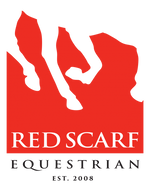In modern times, the city of Cologne finds itself once more on a frontier, as it was wont to do in its long history. Today, the frontier is that of equestrian fashion, as showcased there in one of the world’s most important horse expositions, the Spoga. RSE travelled there earlier this year. In today’s blog, we visit the city once again and take a peek at one of the newest fashion lines that we have brought home.

The City of Cologne has straddled the Rhine River for a very long time. And in that long history has found itself as a frontier outpost on multiple occasions and in multiple ways. One of the earliest frontiers upon which the city stood was that of the Roman Empire. It stood at attention looking out over the Rhine River, as one of the outposts guarding the empire from the dangers that laid on the other side.
Another crucial and inspiring frontier that Cologne embraced was that of the magnificence of medieval Gothic architecture.
Another crucial and inspiring frontier that Cologne embraced was that of the magnificence of medieval Gothic architecture. Stone masons in the middle ages adopted newly developed construction techniques which allowed for the support of cathedral walls of breath-taking height and filled with painted stain glass windows telling stories of faith. This meant that Cologne came to be home to one of the world’s most magnificent Cathedrals.
The Cathedral is not, however, only a manifestation of incredible engineering and construction, especially given the overall level of technological development current at the time. The Cathedral is also a manifestation of the cutting edge use of glass to allow for light to enter an interior space. It is important to pause to reflect that the beauty of light filtering through glass stained windows to fill the interiority of the building was not only for its aesthetic effect. The light spoke to a spiritual significance as well, as the Abbot of St. Denis, Sugar, maintained. The idea of providing for a means to fill the cathedral with light was a manifestation of faith and thought. It was not simply a technological feat for its own sake.
While the Cathedral, one of the tallest buildings on the skyline of Cologne, keeps watch over the city, in its streets one finds the welcoming aroma of bakeries, offering handmade breads, and cheese shops, to welcome the visitor.
The exhibition, indeed, represents another way that Cologne has maintained itself on the cutting edge of things. Once inside the Spoga exhibition, we were immediately struck by the immensity of the displays. The Spoga holds two events annually, the one we attended, Spring, 2018, was the smaller of the two, the larger one occurring in the autumn. Still, even for the smaller Fair, it took two days to make our way around the show.
We were impressed by the genuine warmth of the reception we received from the numerous vendors at the Fair. Many served Prosecco, cheese and meat boards, chips, and other finger-food snacks. We enjoyed listening to them speak about their wares. We were struck, too, by the attention to detail. They would tell us, for example, why this colour was chosen, or why this particular feature was added. They spoke, too, of how each piece in the collection works for both horse and rider, in and out of the arena.

In Europe, to an unprecedented degree, the horse and rider constitute a unity.
This was something that we found to be an important theme in Cologne. In Europe, to an unprecedented degree, the horse and rider constitute a unity. The rider and her, or his, horse perform as a unit, and it is quite evident that they move and maneuver together as one. That seamless connection between horse and rider is celebrated, and perhaps even symbolized, in the orchestrated apparel that is worn when riding, so that the apparel allows for a seamlessness of presentation of colour and material.
From the fashion perspective, this approach allows the rider to wear the clothes whether inside training or performing, or away from the barn entirely. This allows for the embracement of the equestrian as a day-to-day lifestyle. The equestrian, the barn, the horse and rider are at the center of things.
One of our favourite collections that we just had to bring home to Canada, was the collection of Joshua Jones outerwear from the United Kingdom. To our eye, they combine sophistication and class, are available in an assortment of vibrant hues, and yet are neutral enough to match every ensemble. Combined with feminine cuts, precise stitching, stunning details, and the highest quality materials possible - this collection is compelling. There is simply a piece in this collection to suit everyone’s taste. We hope that you enjoy it too.
Cologne now seems very far away in space and time. Still, the emphasis on quality, sportsmanship and seamlessness between horse and rider that we witnessed there remains inspirational.
Reference: Brian Tierney and Sidney Painter, Western Europe in the Middle Ages: 300-14575 5th Edition (Toronto: McGraw-Hill, Inc., 1992).






Leave a comment